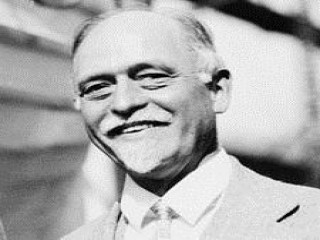
Irving Fisher biography
Date of birth : 1867-02-27
Date of death : 1947-04-29
Birthplace : Saugerties, New York, Unted States
Nationality : American
Category : Science and Technology
Last modified : 2011-06-30
Credited as : Economist, monetarism, quantity-theory-of-money equation
Irving Fisher was born in Saugerties, N. Y., on Feb. 27, 1867. He received his doctoral degree in mathematics at Yale in 1891. From 1892 until 1895 he taught mathematics at Yale; in 1895 he joined the faculty of political economy, where he remained until his retirement as professor emeritus in 1935.
It is virtually impossible to do justice to Fisher's many contributions to economics and statistics, but his writings on monetary theory and policy and index numbers have earned special acclaim. He brought to his writings the lucidity, analytical precision, and rigor of an accomplished mathematician. In The Purchasing Power of Money (1911) Fisher completely recast the theory of money into his classical quantity-theory-of-money equation MV + M'V' = PQ, which made the purchasing power of money (or its reciprocal, the general price level P) completely determined by the stock of money in circulation M, its velocity of circulation V, the volume of bank deposits M', their velocity of circulation V', and the total volume of transactions Q. Fisher translated his theory into a policy prescription of "100 percent money" (all bank deposits should be backed by 100 percent reserves rather than fractional reserves, used then and now by virtually all banking systems) on the grounds that such a policy would control large business cycles. He spent a large part of his private fortune promoting (unsuccessfully) the policy.
Fisher's The Theory of Interest, which draws heavily from John Rae and Eugen von Bohm-Bawerk, added clarity and rigor to one of the most complex concepts in economics. In his theory the rate of interest is based on the supply of savings and on the demand for capital as determined by the present and future outlook for investment opportunities. He also distinguished between the nominal and real rates of interest and developed the concepts of positive, negative, and neutral time preferences. Fisher's theory anticipated the later works of members of the Cambridge school.
Fisher made significant and original contributions in statistical theory, econometrics, and index number theory. The Making of Index Numbers (1922) became a standard reference on the subject. After a methodical and quantitative analysis of various index number formulations, he developed his "ideal" index, the geometric mean of the Paasche and Laspeyre indexes. He considered this formulation "ideal" because it met his "time reversal" and "factor reversal" tests.
It has been said of Fisher's contributions to economics and statistics that he built grand columns and arches but he never quite completed the intellectual edifice that could be designated the Fisher theory or the Fisher economic system. It can also be said that he laid solid foundations on which others built their edifices.
















